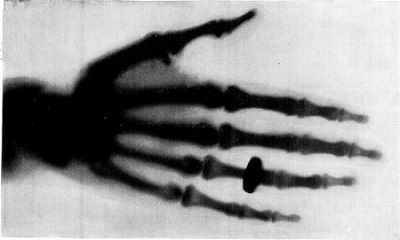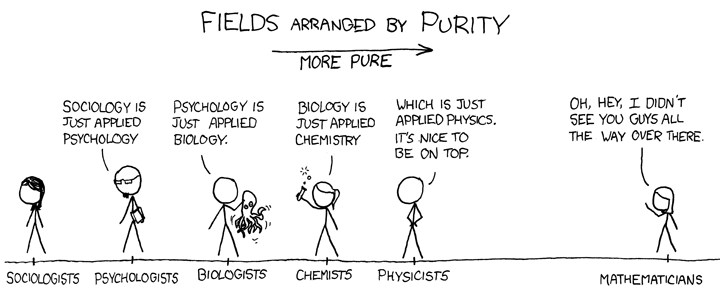1.3: Pure and Applied Research
- Page ID
- 204155
In science, we usually talk about two types of research: pure and applied. Pure research focuses on answering basic questions such as, "how do gases behave?" Applied research would be involved in the process of developing specific preparation for a gas in order for it to be produced and delivered efficiently and economically. This division sounds like it would be easy to make, but sometimes we cannot draw a clear line between what is "pure" and what is "applied".
Examples of "Pure" Research
A lot of "pure" research is of the "what is this?" or "how does it work?" variety. The early history of chemistry contains many examples. The ancient Greek philosophers debated the composition of matter (earth? air? fire? water? all of the above?). They weren't going to do anything with their knowledge - they just wanted to know.

Ancient Greek philosophers."A Greek Philosopher and His Disciples", Antonio Zucchi
Studies on the elements (especially after Mendeleev's periodic table was published) were primarily "pure" research types of experiments. Does this element exist? What are its properties? The scientists did not have any practical application in mind, but were curious about the world around them.
Examples of "Applied" Research (Technology)
There is a great deal of "applied" research taking place today. In general, no new science principles are discovered, but existing knowledge is used to develop a new product. A good example of this type of research is the application of x-rays in medicine. In the last 1800's, Wilhelm Röntgen discovered how to produce x-rays by using a cathode ray type. He noted that this new ray could go through the body. Realizing this, Röntgen believed that x-rays would be very helpful in diagnosing and determining disease and injury in the body.

Röntgen is the father of the X-ray. while working with experiments and procedures of previous scientists, Röntgen noticed that even through secured champers for light, and unknown energy was emitted that reacted with phosphorescent materials he was using in his experiments. his discovery and subsequent papers earned him the Nobel Prize in Physics in 1901. He used his wife's hand to determine if the new rays could pass through the body.
Some "In-Between" Examples
Sometimes it is hard to differentiate between pure and applied research. What may start out as simply asking a question may result in some very useful information. If scientists are studying the biochemistry of a microorganism that causes a disease, they may soon find information that would suggest a way to make a chemical that would inactivate the microorganism. The compound could be used to learn more about the biochemistry, but could also be used to cure the disease.
Hemoglobin is a protein in red blood cells that transports oxygen in the bloodstream. Scientists studied hemoglobin simply to learn how it worked. Out of this research came an understanding of how the protein changes shape when oxygen attaches to it. This information was then applied to help patients with sickle cell anemia, a disorder caused by an abnormal hemoglobin structure that makes hemoglobin molecules clump up when oxygen leaves the protein. Basic knowledge of protein structure led to an improved understanding of a wide-spread disease and opened the door for development of treatments.

What is an applied science or research is relative perspective depending on the field. Image used with permission (CC BY-NC 2.5; xkcd.com).
Who Can Do Research?
Anyone can perform research, not just chemists, physicists, and other scientists. There are many opportunities to be a "citizen scientist." You can be a participant in research studies, work with others to design research, or even perform research as part of your work or personal life. How will you incorporate research in your life?
Summary
- Pure research focuses on understanding basic properties and processes.
- Applied research focuses on the use of information to create useful materials.
- Sometimes there is no clear line between pure and applied research.


